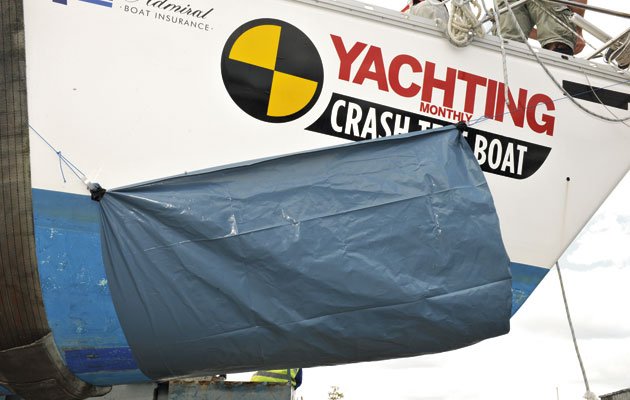I have the plugs, both wood and foam, but i don't see them as useful in a blown hose scenario. Rub your hands over each hose to find the fault, remove the 2 rusted clamps by feel, (they're probably under water) remove the jammed on hose, not going to happen. Maybe you can cut the hose if you bring your utility knife with you. Cut a spare piece. Under water. Time it.
If your leak is from a blown hose, closing the seacock will fix it, the wooden plugs are in case your through hull has failed, this can happen a couple different ways:
The weight of a filled hose thrashing around in violent seas can break a through hull especially if it is a valve screwed onto a through hull fitting (most common) and not a true seacock that is through bolted to the hull. The fittings may have been deteriorated by corrosion, people kicking or stepping on them inadvertently, or heavy objects stored near them striking them. In this case, the metal through hull is probably still in place and you are plugging a hole the inner diameter of the metal fitting.
The through hull itself can corrode through and break off leaving a the actual hole in the hull to plug, which is of course larger than the inner diameter of the fitting. For this reason, your plugs need to have a pretty significant taper to them to account for the various diameters to be plugged.
This past spring I had the garboard fitting corrode through where it passes through the hull. When the boat was launched, I inspect all of the hull penetrations while the boat was hanging in the slings. This time there was a slow leak coming in at the threads of the this plug, I tightened it to no avail and then the yard lifted the boat back up for me twice to reapply Teflon tape to the tapered pipe threads of the plug, it just wouldn't stop leaking and also never came to firm stop when tightening it. After the boat was placed back on stands, I removed the machine screws and pried off the fittings flange from outside of the boat, the flange came off but the remainder of the fitting remained in the hull held in place by caulk, when I removed the remainder, it crumbled in pieces, the caulk was the only thing holding it together and appearing to be solid. Of course, the fitting was original to the boat and all available replacements were different dimensions so I had to glass the hole closed and cut a new hole. I considered leaving it out and just staying with the solid fiberglass but being able to let the hull drain on land during storage is convenient. Anyway, if that leak had not been spotted, it would have probably come free on it's own within the next couple of seasons and sunk the boat. None of the through hull fittings were bonded on this boat and we left it that way but did replace and/or re-bed every fitting during the course of ownership, this garboard being the final piece.

